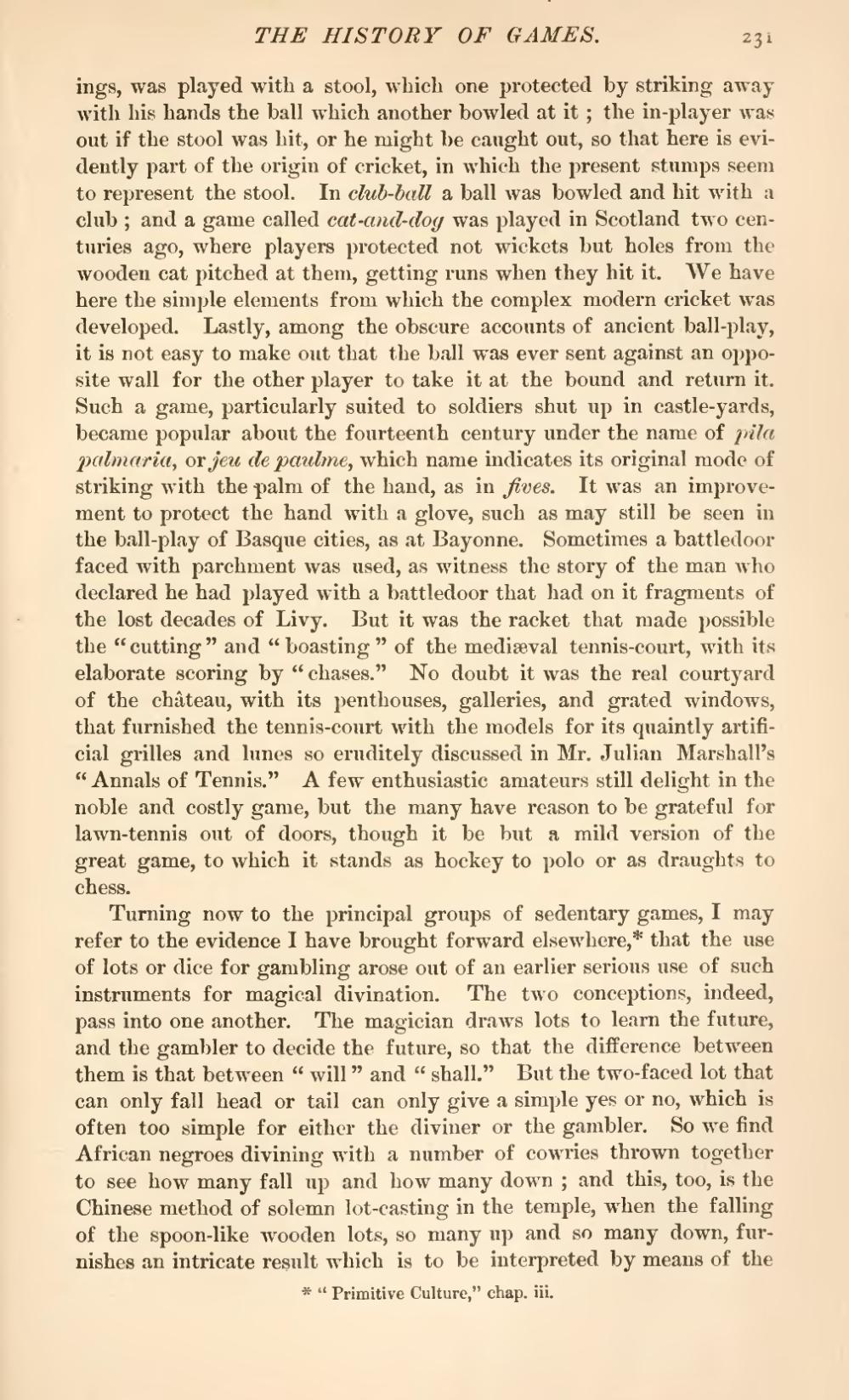ings, was played with a stool, which one protected by striking away with his hands the ball which another bowled at it; the in-player was out if the stool was hit, or he might be caught out, so that here is evidently part of the origin of cricket, in which the present stumps seem to represent the stool. In club-ball a ball was bowled and hit with a club; and a game called cat-and-dog was played in Scotland two centuries ago, where players protected not wickets but holes from the wooden cat pitched at them, getting runs when they hit it. We have here the simple elements from which the complex modern cricket was developed. Lastly, among the obscure accounts of ancient ball-play, it is not easy to make out that the ball was ever sent against an opposite wall for the other player to take it at the bound and return it. Such a game, particularly suited to soldiers shut up in castle-yards, became popular about the fourteenth century under the name of pila palmaria, or jeu de paulme, which name indicates its original mode of striking with the palm of the hand, as in fives. It was an improvement to protect the hand with a glove, such as may still be seen in the ball-play of Basque cities, as at Bayonne. Sometimes a battledoor faced with parchment was used, as witness the story of the man who declared he had played with a battledoor that had on it fragments of the lost decades of Livy. But it was the racket that made possible the "cutting" and "boasting" of the mediæval tennis-court, with its elaborate scoring by "chases." No doubt it was the real courtyard of the château, with its penthouses, galleries, and grated windows, that furnished the tennis-court with the models for its quaintly artificial grilles and lunes so eruditely discussed in Mr. Julian Marshall's "Annals of Tennis." A few enthusiastic amateurs still delight in the noble and costly game, but the many have reason to be grateful for lawn-tennis out of doors, though it be but a mild version of the great game, to which it stands as hockey to polo or as draughts to chess.
Turning now to the principal groups of sedentary games, I may refer to the evidence I have brought forward elsewhere,[1] that the use of lots or dice for gambling arose out of an earlier serious use of such instruments for magical divination. The two conceptions, indeed, pass into one another. The magician draws lots to learn the future, and the gambler to decide the future, so that the difference between them is that between "will" and "shall." But the two-faced lot that can only fall head or tail can only give a simple yes or no, which is often too simple for either the diviner or the gambler. So we find African negroes divining with a number of cowries thrown together to see how many fall up and how many down; and this, too, is the Chinese method of solemn lot-casting in the temple, when the falling of the spoon-like wooden lots, so many up and so many down, furnishes an intricate result which is to be interpreted by means of the
- ↑ "Primitive Culture," chap. iii.
